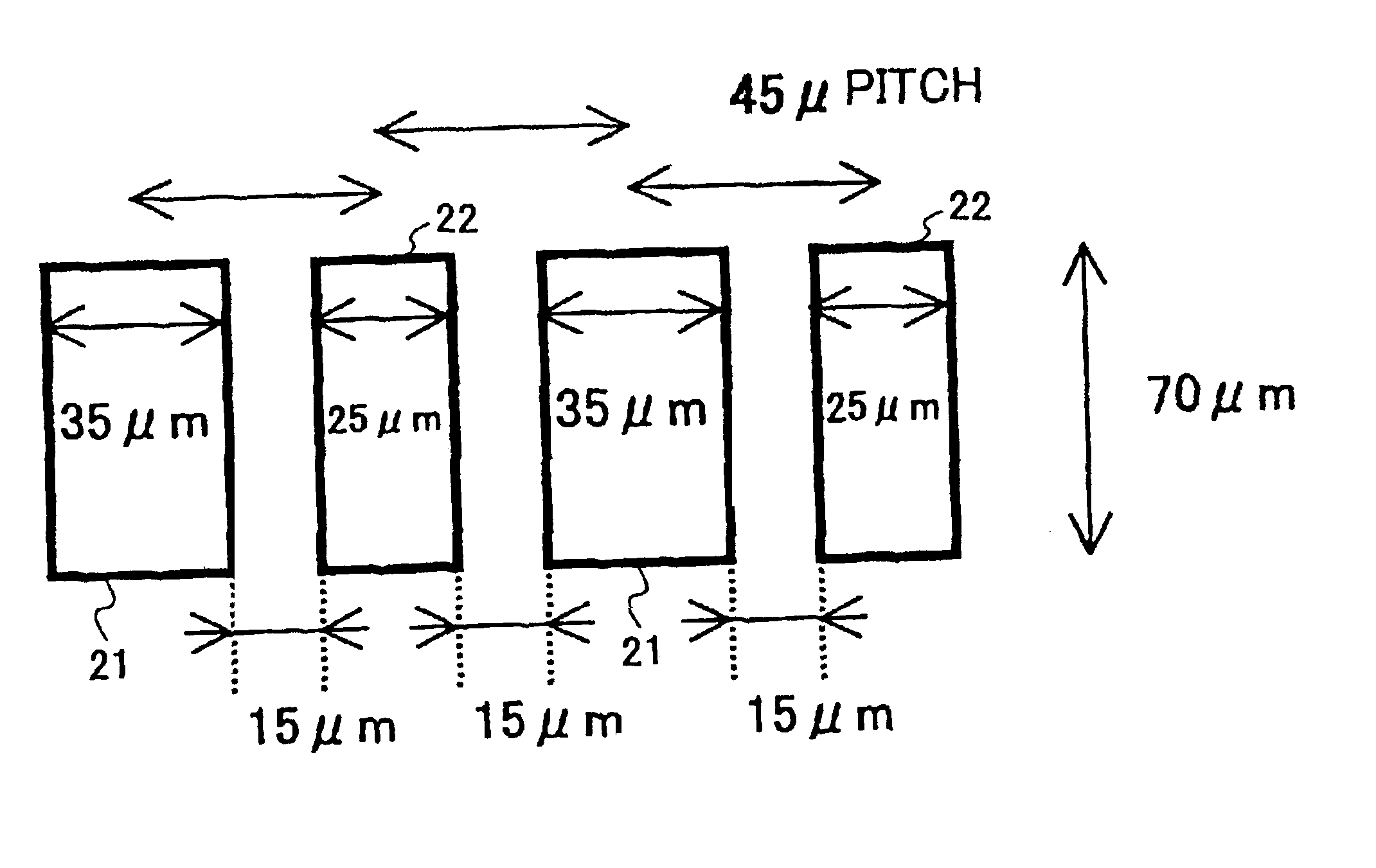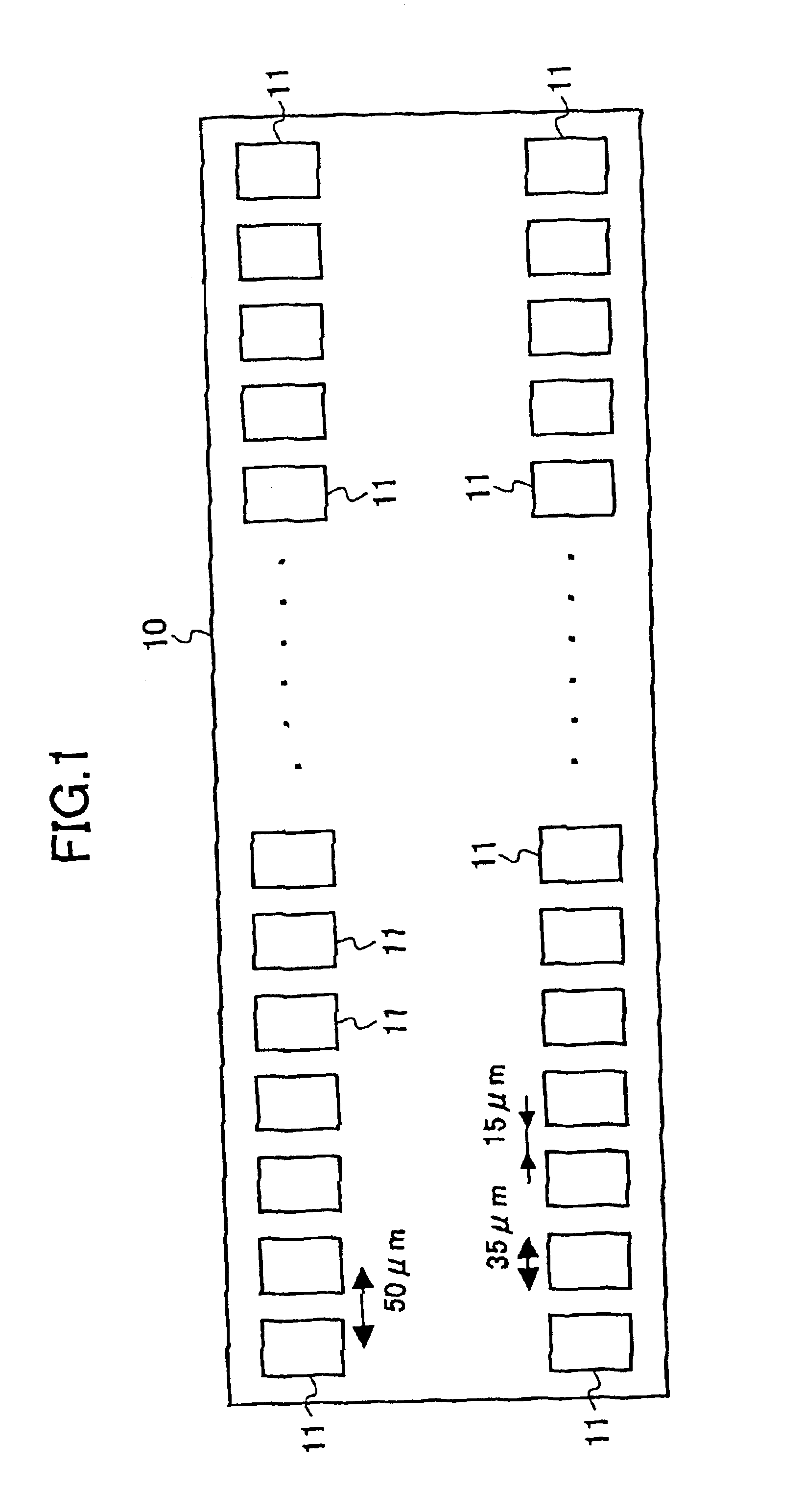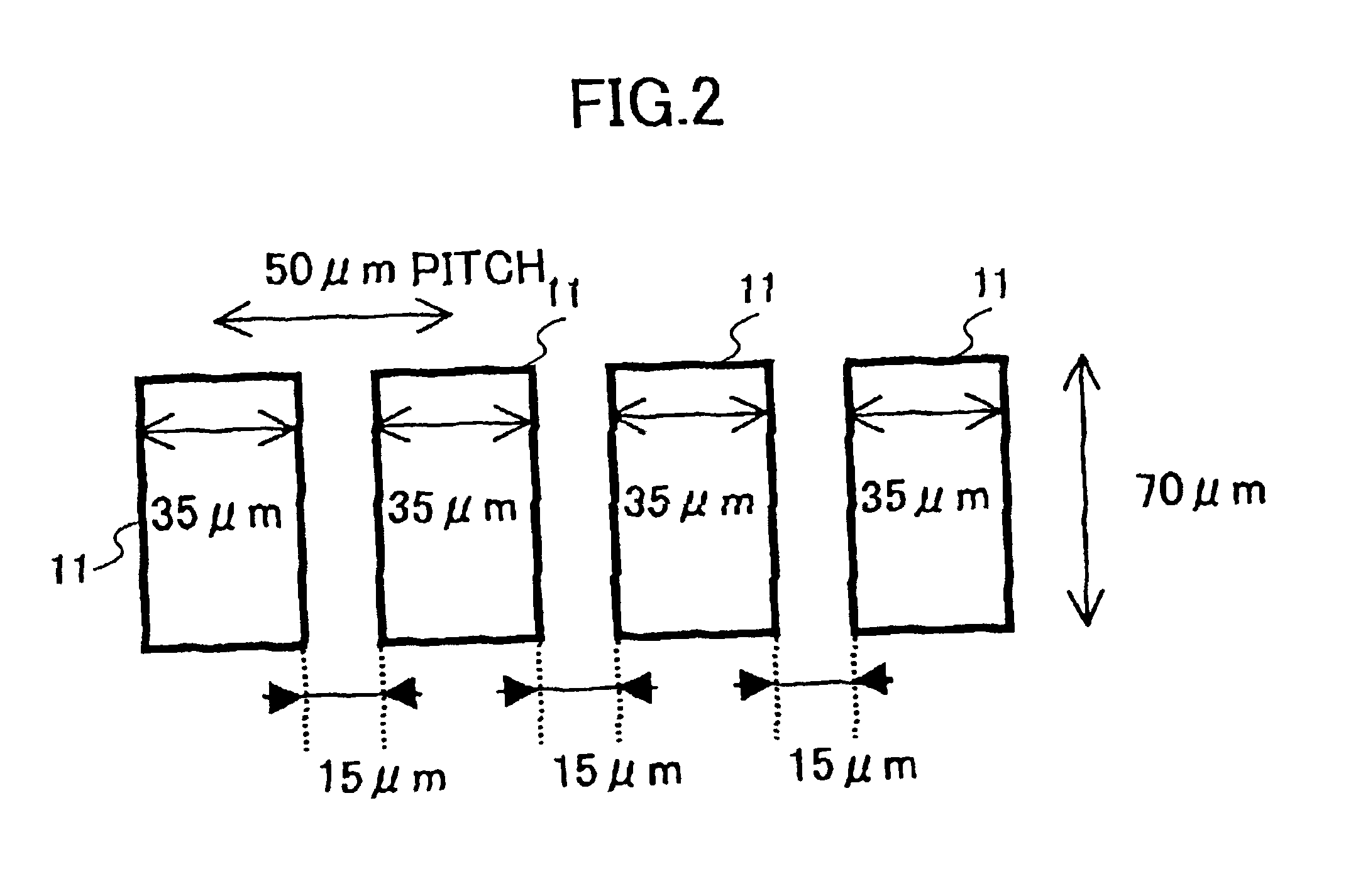Semiconductor integrated circuit with shortened pad pitch
a technology of integrated circuits and semiconductors, applied in the direction of semiconductor/solid-state device testing/measurement, basic electric elements, instruments, etc., can solve the problems of failure of test and unsuitability, and achieve the effects of shortening the pitch of the pad, increasing the bandwidth of signal input/output, and increasing the pad density
- Summary
- Abstract
- Description
- Claims
- Application Information
AI Technical Summary
Benefits of technology
Problems solved by technology
Method used
Image
Examples
Embodiment Construction
In the following, embodiments of the present invention will be described with reference to the accompanying drawings.
FIG. 3 is an illustrative drawing showing a pad arrangement on a semiconductor integrated circuit according to the present invention. A semiconductor integrated circuit 20 of FIG. 3 is a driver IC or the like that drives a liquid crystal display panel, for example. A plurality of first pads 21 and a plurality of second pads 22 are arranged in turn to form a line, and two rows are provided in such a manner. FIG. 4 is an example of the size and layout of the first pads 21 and the second pads 22.
As shown in FIG. 4, each of the first pads 21 has a rectangular shape measuring 70 micrometers by 35 micrometers. The second pads 22 are smaller than the first pads 21, and each has a rectangular shape measuring 70 micrometers by 25 micrometers. The first pads 21 and the second pads 22 are situated in turn such that the first pads 21 come next to the second pads 22. Intervals bet...
PUM
 Login to View More
Login to View More Abstract
Description
Claims
Application Information
 Login to View More
Login to View More - R&D
- Intellectual Property
- Life Sciences
- Materials
- Tech Scout
- Unparalleled Data Quality
- Higher Quality Content
- 60% Fewer Hallucinations
Browse by: Latest US Patents, China's latest patents, Technical Efficacy Thesaurus, Application Domain, Technology Topic, Popular Technical Reports.
© 2025 PatSnap. All rights reserved.Legal|Privacy policy|Modern Slavery Act Transparency Statement|Sitemap|About US| Contact US: help@patsnap.com



